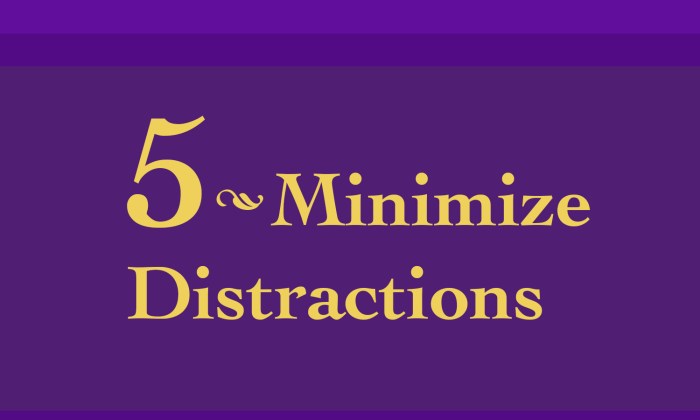To minimize distractions and confusion when assessing an older – When assessing older individuals, minimizing distractions and confusion is crucial to ensure accurate and meaningful evaluations. By creating a calm and focused environment, using clear communication, and respecting individual preferences, professionals can effectively assess cognitive abilities and well-being.
This article provides practical strategies for reducing distractions, managing sensory overload, and structuring the assessment process to optimize outcomes for older adults.
Establishing a Quiet Environment

Minimizing background noise and distractions is crucial for reducing confusion and enhancing focus during assessments. Strategies include:
- Choosing a quiet room with minimal external noise
- Using white noise machines or earplugs to block out ambient sounds
- Informing others in the vicinity to maintain silence
Creating a designated assessment space can further reduce distractions. This space should be:
- Free from clutter and unnecessary objects
- Well-lit and ventilated
- Comfortable and private
Additionally, isolating the individual from external stimuli can improve focus. This can be achieved by:
- Closing blinds or curtains to block out visual distractions
- Using headphones or earplugs to reduce auditory distractions
- Providing a quiet and comfortable place for the individual to sit or lie down
Managing Visual Clutter: To Minimize Distractions And Confusion When Assessing An Older

Reducing visual distractions in the assessment area is essential for minimizing confusion and improving comprehension. Decluttering strategies include:
- Removing unnecessary objects, such as papers, books, or decorations
- Organizing materials and equipment in a clear and accessible manner
- Using visual aids, such as charts, diagrams, or pictures, to enhance focus and understanding
Visual aids should be:
- Relevant to the assessment content
- Clear, concise, and easy to understand
- Used sparingly to avoid overwhelming the individual
Limiting Sensory Overload

Sensory sensitivities can significantly impact assessment performance. Managing sensory input can improve focus and reduce anxiety:
- Adjusting lighting to avoid glare or harsh shadows
- Maintaining a comfortable temperature in the assessment area
- Minimizing tactile stimulation by using soft and comfortable materials
Sensory fidgets or calming tools can also be beneficial:
- Stress balls or fidget toys to provide tactile stimulation
- Weighted blankets or lap pads to reduce anxiety and promote relaxation
- Calming music or nature sounds to create a soothing environment
Quick FAQs
How can I minimize background noise during an assessment?
Use sound-absorbing materials, such as curtains or carpets, and consider using white noise or calming music to mask external sounds.
What are some examples of visual clutter that should be reduced?
Remove unnecessary items from the assessment space, such as posters, plants, or personal belongings, and ensure that the lighting is adequate and glare-free.
How can I manage sensory sensitivities during an assessment?
Consider the individual’s preferences for lighting, temperature, and tactile stimulation, and provide fidgets or calming tools to help reduce anxiety and improve focus.